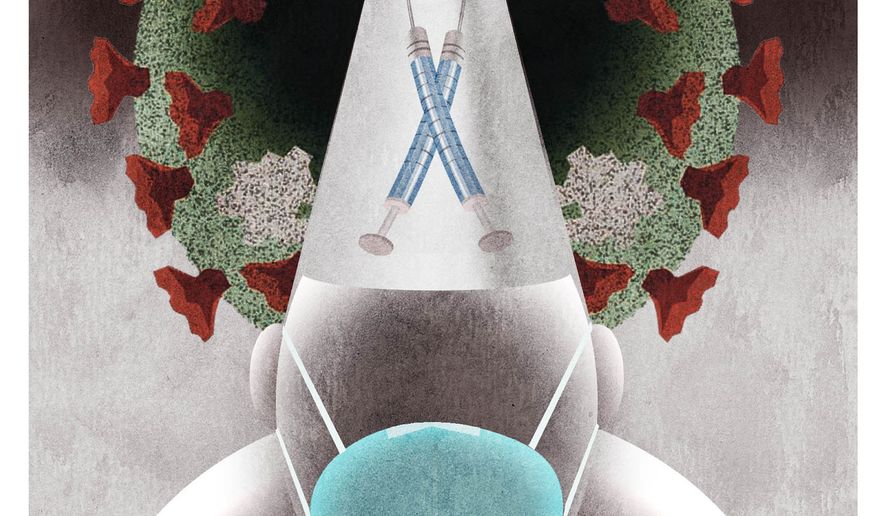OPINION:
The coronavirus emergency that gripped the world has faded, and U.S. citizens are busy getting on with their lives. A return to normalcy, though, does not expunge the need to examine how the world’s most technologically advanced nation managed to chalk up its horrendous pandemic performance. In addition to its hearings on COVID-19’s origin, Congress must examine the Biden administration’s stubborn resolve to stay its coronavirus course at the cost of even more lives and treasure.
The United States still leads the world in COVID-19 deaths, adding 12,111 more in February to its record of 1.1 million, according to the Centers for Disease Control and Prevention. In distant second place last month is China, with 6,116 deaths — half the U.S. total with a population four times the size — if its figure is to be believed. Clearly, the American public-health establishment has bungled its job.
U.S. reliance on the various experimental vaccines has resulted in the distribution of more than 965 million doses, with more than 672 million administered. Over the past two years, though, cravings for the vaccinations have waned. While 81% stood in line for the first dose and 69% came back for the follow-up jab, only 16% have accepted the updated, “bivalent” boosters, according to the CDC.
Reports of adverse reactions are likely the cause of the sharp drop-off. The U.S. database that tallies claims of adverse reactions after vaccines were administered showed 17,024 reports of death after someone received a COVID shot. By comparison, all other vaccines since 1990 have resulted in only 10,191 reports of death and 923,596 adverse reactions. The reports in the system are unverified and don’t necessarily mean the vaccines lead to the deaths, but the numbers are still sobering to many.
As much as Americans initially welcomed immunization against the deadly virus, they now recoil at the realization that they’ve become subjects in science’s largest experiment.
Despite plummeting demand, manufacturers have continued to crank out the shots. More than 293 million vaccine doses sit unused in storage. Each inoculation costs the federal government — meaning taxpayers — around $21, which adds up to more than $6.1 billion. The Food and Drug Administration is keeping the surplus out of the trash, though, extending shot shelf life. Expiration of the numerous COVID vaccines have been pushed back up to 12 months, and for various therapies, up to 30 months, provided the products have been properly refrigerated.
The FDA explains, “Vaccines authorized for emergency use — as products that are not approved under a biologics license application and are still being studied under investigational new drug applications — do not have fixed expiry dates.” Americans may not be particularly squeamish about using expired ketchup, but they may wonder whether experiments on vaccine shelf life add an extra measure of health risk.
Equally disturbing is the apparent ineffectiveness of the ubiquitous masks that public-health officialdom flogged incessantly — and that many medical facilities still require. “Wearing masks in the community probably makes little or no difference to the outcome of laboratory‐confirmed influenza/SARS‐CoV‐2 compared to not wearing masks,” reads a widely referenced study of various “physical interventions” to prevent virus transmission, published by the Cochrane Library in January. By the billions, they make a difference in the nation’s landfills, though.
In its government oversight role, Congress should follow its investigation of the coronavirus’s origin with inquiries into the Biden administration’s faulty pandemic performance.
Update: This editorial has been updated to better describe the U.S. system for reporting adverse reactions to vaccines.




Please read our comment policy before commenting.